Camino Day 21: Léon
My only 'day off' on the Camino, naturally I still spent much of it doing what I normally do in cities: walking around. To me there are two places in Leon: inside the cathedral, and everywhere else.
I’m currently publishing a day-by-day account of my adventure on the Camino de Santiago. If you’d like to keep up with it, or if you’re interested in more stories and essays about travel, the outdoors, physical movement and the journeys they take us on, then Subscribe Now.
What else was I going to do in Léon, only walk around?
This is my first day of ‘rest’, though I end up doing about 20 laps of the centre of Léon - I surely put another 10km up on the board over the course of the day and night. It’s a fine city – just like all the others. Something I love about Spanish towns and especially the cities is feeling that they are ALIVE. People live their lives in the streets, in the bars, in the cafes, in the plazas, on each other’s doorsteps.
I know we have weather issues back home but it seems there’s a much stronger culture of living life in towns as well as indoors – it’s no accident that the towns are aesthetically beautiful, historical, walkable, liveable.
In Léon they provide tapas with every drink, whether coffee or wine. It could be anything from a side of crisps to a dish of warm braised pork to some seafood or a garlic soup. Bars tend to have great big pots of stuff that they can lash out a couple of spoonfuls to customers. Another wonderful innovation of the local culture. I’m not old enough to remember when they used to turn the lights on in nightclubs to serve sausage and chips at midnight – they had a good idea, perhaps less refined sophistication than here.
I’ve mentioned the churches here (which of course includes ‘cathedrals’ or any house of Christian worship, though it was on the Camino where I first experienced someone laughing at me for calling a ‘cathedral’ a ‘church’) before but now it’s time to mention them again.
My first encounter with Léon Cathderal is on my early stroll around the city centre; as I enjoy a marvellous plaza with government buildings, I turn around and see it looming down the end of a long narrow street like Godzilla or King Kong or something, it’s hard to believe the scale of it is accurately perceived, surely a case of the tight alleyway distorting its distance and dimensions?
I make my way towards it, all too liable to being blindsided by a passerby or a cyclist as I can’t take my eyes off it now, once you lock eyes on it you become transfixed and are guided towards it, it seems to exist in its own climate outside of the rest of the city.
As I approach it from a side street the world opens up onto the typical plaza – they’re never tucked away down the back of some other building, but the whole city tends to flourish and build itself around their churches (and cathedrals).
It’s enormous, and as I struggle to take a photo that captures the whole thing on its horizontal and vertical axes, I take a step back and realise I can’t even see the whole thing in one line of sight, without glancing from side to side or top to bottom. It’s about the size of a football pitch, or more accurately: about the size of a football stadium.
My relationship with and opinion of churches (and cathderals) on the Camino has been the same as my relationship with anything or anyone else:
They exist, I’m aware of their significance, some of them look incredible, and I try to decide in the moment as much as possible how much I care about them, or want to care about them, or how I’m going to engage with them.
The Léon cathedral has me genuinely excited from the outside, and I’ve heard from long ago that it’s something I should definitely check out from the inside. Like everything else though, the opinion of others is often worthless. In Burgos, I didn’t feel like paying in past the door, as I felt like I’d seen enough. Here though I want to investigate for myself.
And as I told some German and Dutch friends shortly after exiting on the a bright sunny evening, the entrance fee was the best €6 I spent on the Camino.
The external structure of the building is a stunning behemoth, and a display of architectural and engineering wonder and triumph – especially considering it was built in the 12th century, long before there were things like engineering degrees and calculus.
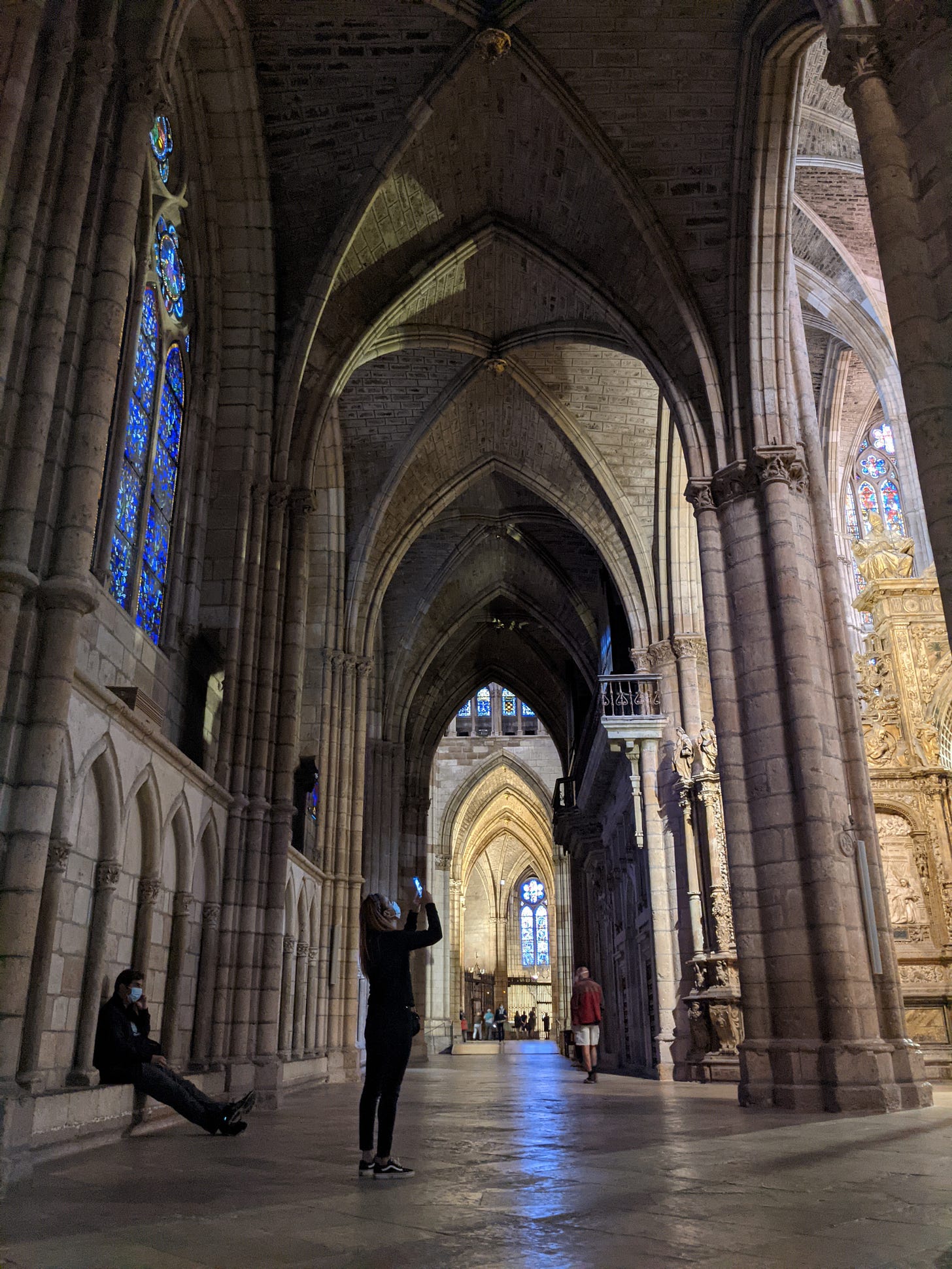
The interior however extends into what you could only label as ‘the divine’. The narrator of the guided audio tour describes “Gothic cathedrals made of stone and light”. There are hundreds of stained-glass windows, each depicting deep stories and messages from the bible. As with the church in Navarette, or any other church I’ve been in (I’ve been into quite a few at this stage, to be honest) I don’t necessarily understand the meaning of these sculptures and paintings and images and carvings – but just to stand and bear witness to them is a marvel in itself.
I’m no expert in, nor do I even speak the language of architecture: I know now that it’s a Gothic building, and two things stand out about it: the coloured windows and the arches, which are just as powerful as the stained-glass but in a different way, one not as overtly displaying the messages of God or Catholicism (though there are many sculptures and depictions of holy things built into many of them).
These things may have been built to house prayer ceremonies, masses, to display religious images and to remind people of the glory and power of god (or if you’re more cynical, as dedications to the glory and power of the church and the local priests and kings), but standing inside of this building, which casts multi-coloured spectrums of light into different corners of the cathedral depending on the time of day, I’m glad the narrator is able to articulate the different, wordless sense that I have:
“(The cathedral was) built solely to reach god and divine planes simply by contemplating them, bending the laws of nature to achieve it”.
It’s not so much that it was built to display images of God, it’s that the building of the cathedral itself was an exercise and practice and event in which God was reached by those who built it.
To be here now is to stand in the divine presence of whatever it was that possessed those people, and whatever it is that history has allowed it to remain standing all these years later.
“What does it all mean?”
“It means someone built it".”
So it is with the Camino, and the retrospective creative journey I’ve been undertaking the last few weeks that mirrors the trajectory of the trip it’s based on so closely as to make me pause in awe quite regularly.
The Camino - or any journey - is not so much to reveal particular wisdom to the one who undertakes it, it’s that the journey itself is a practice in personal revelation and creation;
and to walk the Camino now is to stand in the divine presence of whatever it was that possessed all those who walked before you - and you yourself - and whatever it is of the Camino that history has allowed to remain standing all these years later; causes natural and cultural.
There is no gospel of the journey that we are all called here to learn, but in walking we are all building our own structures born out of some sort of divine inspiration.
“Let there be light”, as the fella said.
All these weeks later, I still remember the colours.
For more photos and a different type of snapshot of my Camino adventure, follow me on Instagram:
Instagram: @Gav.is.gone
I meet my old buddy Ran for a coffee. It’s two weeks since we’ve seen each other, the morning I left Logroño. Lifetimes have passed. We could have talked for another two weeks about all that’s happened in the meantime. As I’ve said before, it feels like the Camino only really started in the days following Logroño, once I’d suitably sunk into the journey, though you could say that about every day of the Camino – “Oh now it’s just getting started” – up until the present day.
But still, lifetimes have passed, and we do our best to share as many stories as we can, reminiscing on the overlapping ones and sharing as much as we’ve experienced since we last met, as well as remind each other that although we mightn’t see each other again that we’ve much cause to keep in touch after the Camino.
I’d already experienced having to consider how I’m speaking with old acquaintances after an absence of several days – becoming aware in the conversation that our worlds have diverged since we last met. There’s almost a sadness in such conversations as you wonder about what stories you might have shared if your paths hadn’t led you in different directions. It’s a warm reunion though, and good to be able to catch up with an old friend. I’m sure I’ll see him again.
To me it feels like a big step tomorrow, to leave Léon, this city I knew so little about a few weeks, or even days, ago. I wouldn’t have even known where it was before I started the Camino. But the final frontier of the Camino feels like it should be acknowledged somehow.
All the mental and physical preparation complete, or so I’ve been led to believe.
We’re about to go Beyond the end of the known world.
If you’ve done the Camino, are thinking of doing it, or are just interested in discussing the Camino or travel in general - then please leave a comment. I’d love to hear from you.

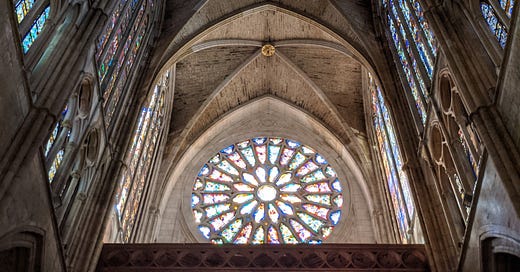



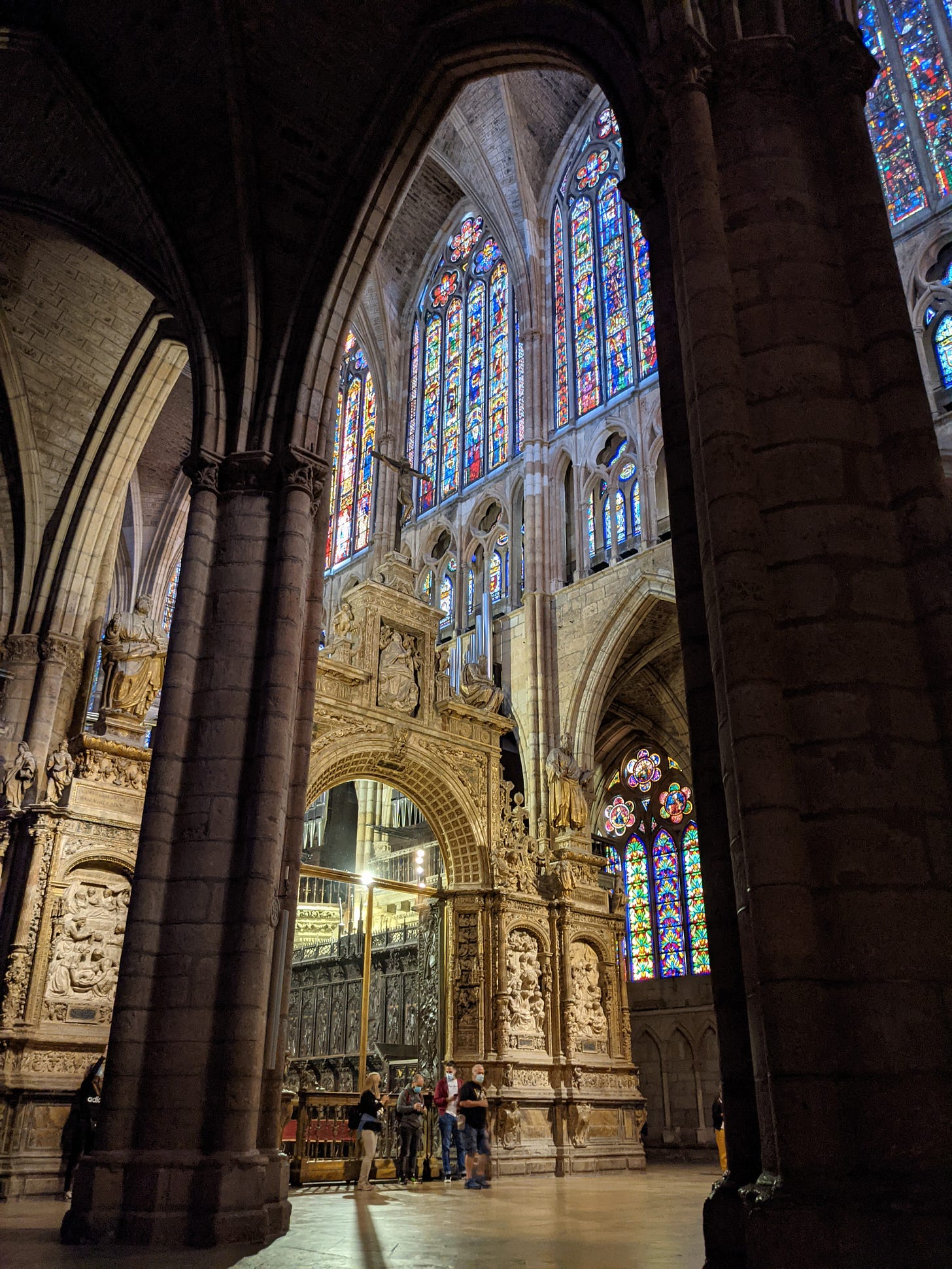
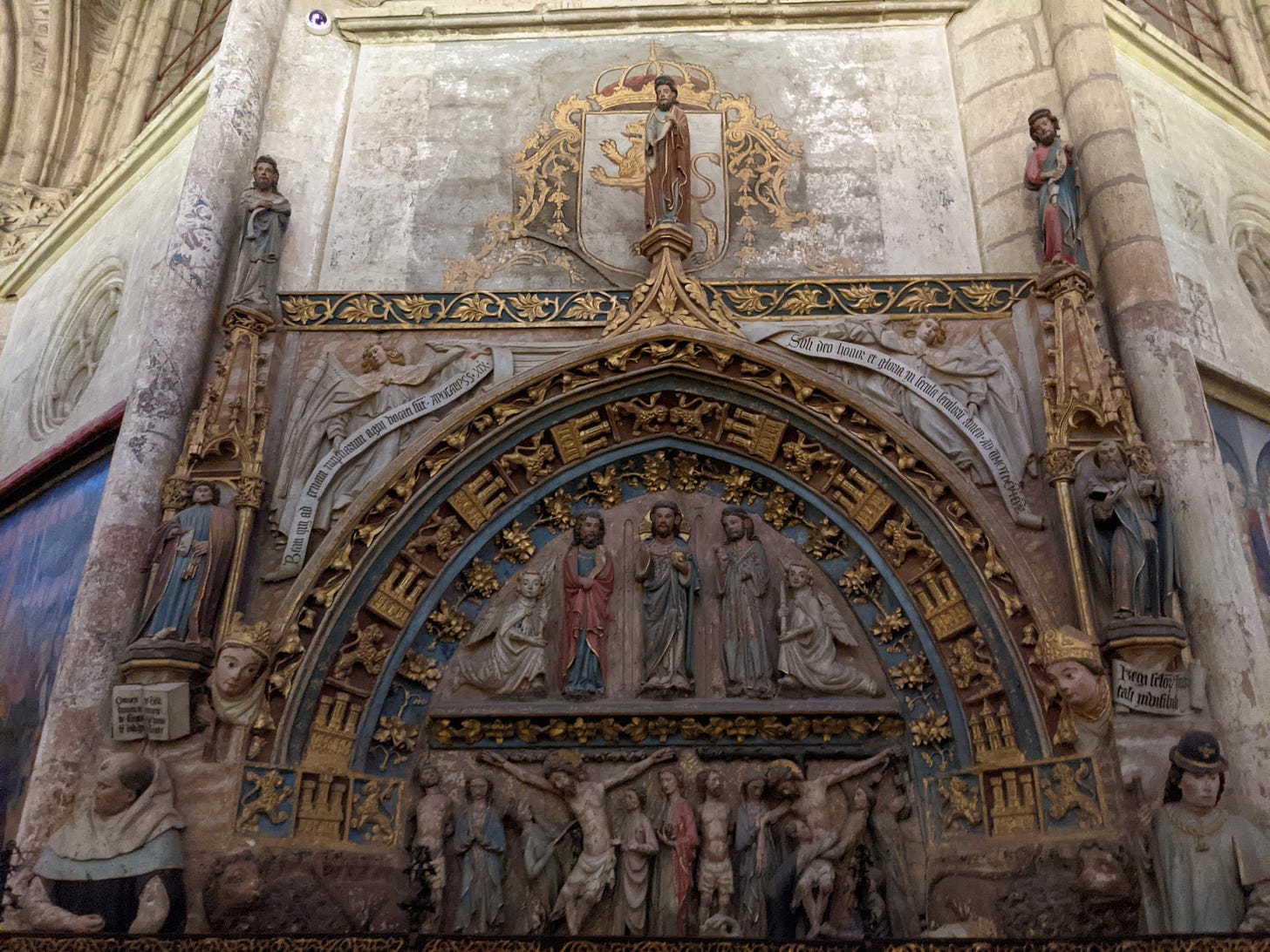
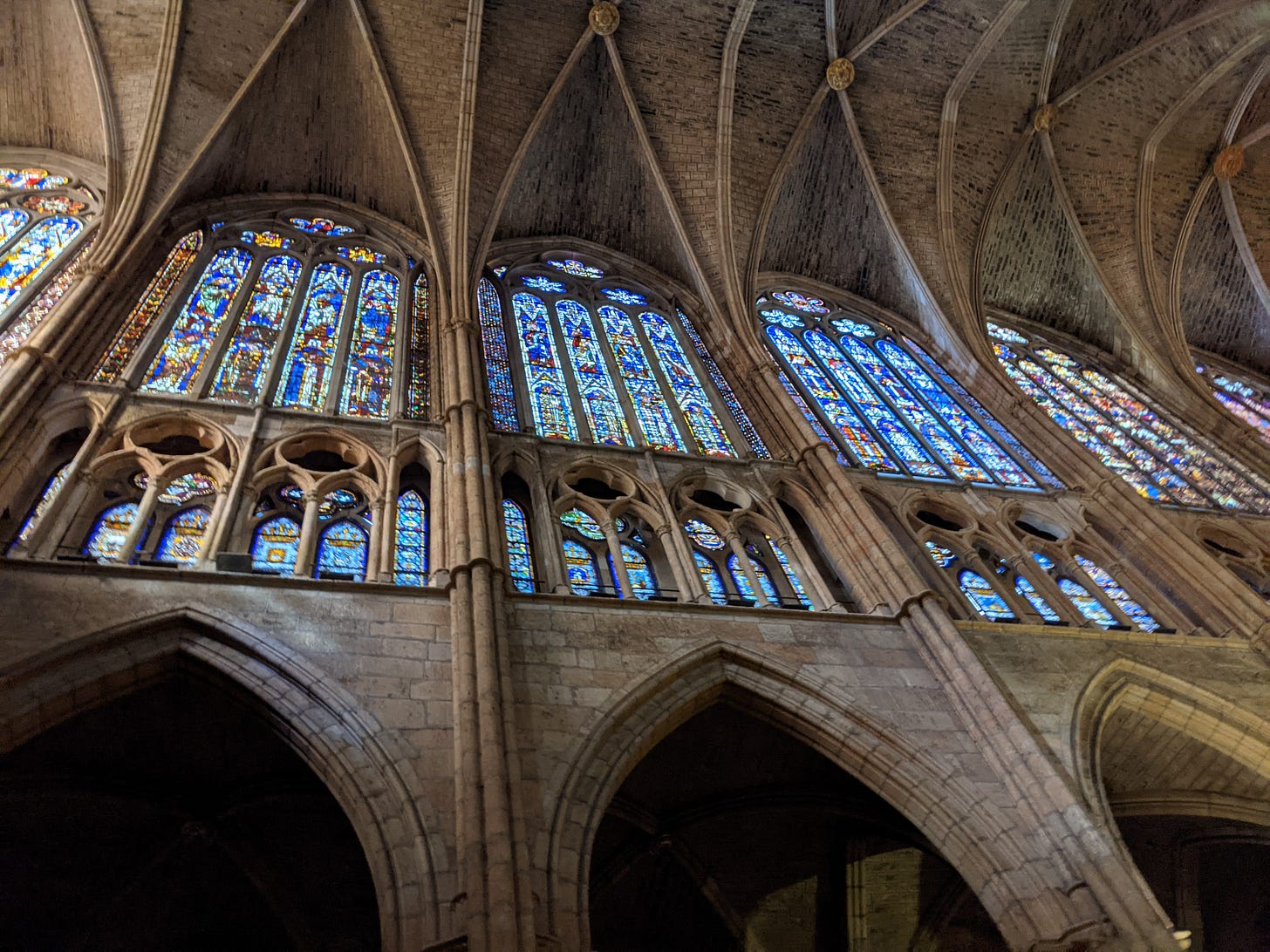
Thought you might like to see our Camino blog from our 2018 excursion https://twoseetheworld.blogspot.com/2018/05/at-start.html